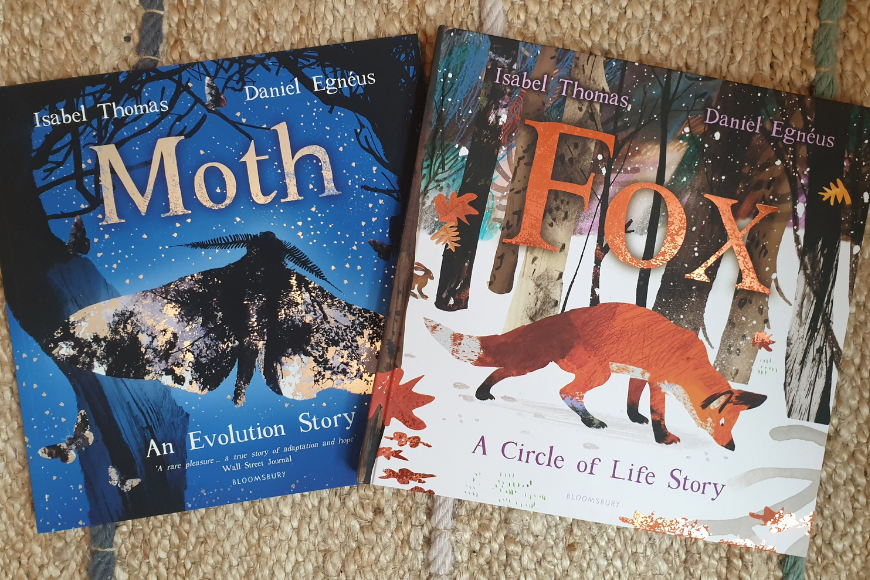Children's Silly Questions Could Save the Planet: Meet Writer Isabel Thomas
"A good children’s science book is nothing like a textbook. It’s an opportunity to tell a complete story that helps children make connections between bite-sized facts and the bigger picture."
1 February 2021

Ahead of her panel at the Emirates Airline Festival of Literature, we had the chance to speak to the award-winning author herself...
Isabel Thomas is a science writer and children’s author based in Cambridge, UK. She has written over 150 books about science and nature for young audiences, including Moth: An Evolution Story which won the AAAS Subaru SB&F Prize for Excellence in Science Books 2020. Isabel also write features for children’s science magazines and work with all kinds of different organisations to create content for science outreach projects.
"Much of my work is driven by a desire to introduce children from diverse backgrounds to the wonder of science and nature and hopefully inspire them to pursue STEM education and related careers," she said.
Isabel, who grew up in a low income, single-parent family said winning a place to read Human Sciences at the University of Oxford opened up the world for her. Today she lives with her husband, three sons and two skeptical guinea pigs.

"At university I became very involved in student journalism, and really discovered my love of writing. After graduating I was keen to find a career that combined science and writing.
I began by working for a publisher of science and maths textbooks, and then in children’s non-fiction. In my spare time I began writing and submitting my own books. I focused on science and nature right from the start because that was my own background.
Establishing myself as a writer was less like a lightbulb moment, but rather several years of being relentless and never giving up!"
What has been the hardest scientific topic/idea to explain for children in your books so far?
"I don’t think any topics should be considered too difficult for children to understand, if you build bridges from what they already know and link a topic to the bigger picture so children can see why it’s important.
Recently, I have written books explaining evolution, particle physics and the periodic table to young children. Perhaps the hardest to write was Fox: A Circle of Life Story, which is a picture book explaining death and its place in nature."
"My only parent died in my mid 20s, and before I had children, I imagined us having very emotional conversations about death and grief. In reality, the first questions my sons asked were very matter of fact. They were curious not so much about the emotional side of death, but the concept of death itself.
I realized death is a very abstract idea for young children. There are lots of books that help families explore grief, but I found none for young children that define the science of death. So I wrote Fox to explain this in a way that is still comforting.
I hope it will make a space for families to talk about what it means when an animal, or a pet, or a loved one dies, and take away some of the awkwardness that children can feel when they have questions."
Can you describe your writing style in 5 words?
"The critic Imogen Russell Williams once described my style as optimistic with an “underlying note of steel” – this is spot on!
Although I am a bit of a chameleon, and my style ranges from humorous – for example This Book will Help Cool the Climate – to poetic and lyrical – for example, Moth: An Evolution Story and Fox: A Circle of Life Story."


























.png?itok=SvZPqMHH)






.png?itok=uB2ieOR7)












